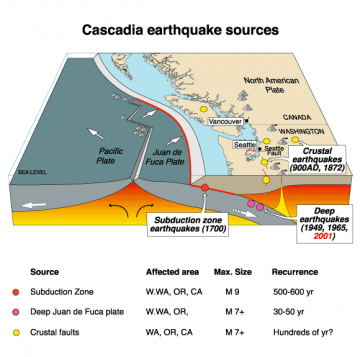Pacific NW Fault Goes Silent, Maybe Be Indicator of Major Earthquake
Thursday, December 04, 2014

Graphic of the Cascadia fault zone, via Wikimedia Commons
The 1,000 km Cascadia fault stretches from Northern Vancouver Island to Cape Mendocino in California and lies underwater between 40 and 80 miles offshore of the Pacific Northwest coastline.
'What is extraordinary is that all of Cascadia is quiet. It's extraordinarily quiet when you compare it to other subduction zones globally,' University of Oregon geophysics professor DougToomey told the Seattle pi.
Earthquake scientists have listening posts along the coast and have been using ships to drop off and later retrieve ocean bottom seismographs.
These record for up to a year right on top of the fault zone, and this year researchers detected few signs of the grinding and slipping they expected, according to the Daily Mail.




Follow us on Pinterest Google + Facebook Twitter See It Read It